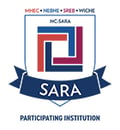 CHALLENGE
CHALLENGEThe Accessibility Services Center
Office Hours
Monday - Friday
9:00am - 5:00pm
Weekend and evening hours
are based on need
and individual requests.
Documentation Guidelines
Purpose
- To ensure that the student has been tested by an an appropriately qualified and licensed professional who has diagnosed a specific learning disability which qualifies the student to receive appropriate accommodations as required by the ADA; and
- to assist and guide us in providing the most effective and appropriate strategies and accommodations for the student.
Is a high school IEP (Individualized Educational Plan) enough documentation?
No, not alone. An IEP does provide useful information about the strategies, resources and accommodations that a student has utilized, and implies that the student was once diagnosed with a disability or learning deficiency. But, clinically speaking, it is not evidence of a particular learning disability. If the student had not been tested or retested in a number of years, it would be wise to be tested again to have up-to-date documentation, which most colleges and all certification exam boards require.
What is Appropriate Documentation?
Documentation for a learning disability is the full report of testing by the physician or psychologist who performed the tests.
Criteria for Acceptable Documentation
- A qualified professional, such as a licensed psychologist or physician must conduct the evaluation
- Testing must be comprehensive and include:
- The diagnostic interview
- The neuropsychological or psycho-educational evaluation of: Aptitude
Achievement
Information Processing Other Assessment Measures - The documentation must include a specific diagnosis. There must be a definitive claim that the student has a learning disability including a description of the type of disability, its characteristics, and its impact on the learning processes.
- Actual test scores from standardized instruments must be provided along with: dates the tests were given, names of tests, student scores matched with norms, and summaries of the results.
- Any recommendations by the evaluator(s) should include a rationale. The evaluator's recommendations should stem clearly and specifically from findings in the evaluation.
- Testing must be current. An accepted definition of "current" is two to three years, however, since many students enter college with documentation that is already two or three years old, the problem is whether or not a new evaluation is required after the three years is up. There is no universally accepted answer to this problem; the most reasonable procedure is to evaluate each student on a case-by-case basis and determine the need for more current documentation based on the nature of the disability, the age and reliability of the documentation, and the student's history. Neumann University expects a student to provide updated documentation when the present documentation is clearly out-dated or unreliable, or when the disability is being medically treated (such as some cases of ADD/ADHD).
The tests most frequently used to measure cognitive or intellectual ability are:
- Wechsler Adult Intelligence Scale - 4th Edition (WAIS-4)
- Wechsler Intelligence Scale for Children - 4th Edition (WISC-4) (high school documentation)
- Woodcock - Johnson Psycho-Educational Battery III (WJPEB-II)
The tests most frequently used to measure educational achievement are:
- Woodcock - Johnson Psycho-Educational Battery III (WJPEB-III)
- Wide Range Achievement Test - 5th Edition (WRAT-5)
- Woodcock Reading Mastery Tests - 3rd Edition (WRMT-III)
- Stanford Diagnostic Reading Test - 5th Edition (SDRT-4)
- Stanford Diagnostic Mathematics Test - 4th Edition (SDMT-4)
The test most often used to evaluate visual processing is the
- Bender Visual Motor Gestalt Test - 2nd Edition
For Accessibility services contact: Dr. Jennifer Labowitz, Director of The Accessibility Services Center






